|

Nikon D1 |
Reminder.
After many years of collaboration with Kodak and Fuji, Nikon launches, in 1999, its first DLSR, the Nikon D1. It incorporates design of Nikon F5 and F100 and is quickly adopted by professionals despite its APS-C of 2.74 million pixels. Other DLSR models follow: D100, D70, D1X ... all with an APS-C sensor found by Nikon as sufficient enough to cover all professional and amateurs needs. A specific range of lenses called DX is even created. The same ideas push Olympus and Panasonic to create the consortium 4/3 with an even smaller sensor.
The rapid rise of the number of pixels quickly surpass the definition, sensitivity and the ability of the best silver films, The digital becomes inevitable. The silver F cameras are stopped. Digital lenses have to become more and more efficient because the new DSLR needs sharper definition. Even technically compatible, old lenses become not usable with new DSLR models.
Because they did not react enough quickly on the digital demand, some companies disappear as Kodak giant.
During 8 years, Nikon kept its position and did not move to a larger digital sensor than APS-C. Canon proposed the Canon EOS-1Ds with 11 million pixels in 2002. Eventually Nikon could only react.
15 years later, the wave of mirrorless cameras and the shrinking photo market have made mirror chamber SLRs obsolete.
Nikon has developed a new Z mount that carries all its efforts and its future.
At the beginning of 2024, Nikon indicated that it would no longer produce any camera equipment: camera, lense or accessory for the F mount.
This web page, like the Nikon F-mount story, is now frozen.
|
|
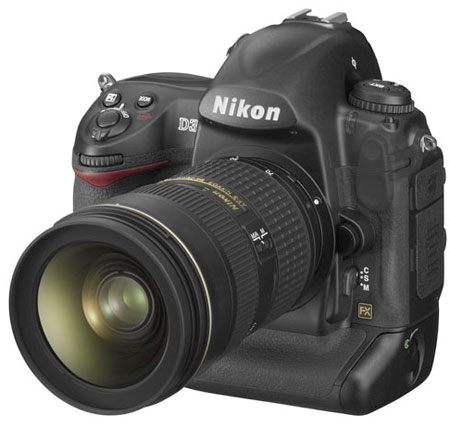
Nikon D3
2007 |

Nikon D700
2008 |

Nikon D3x
2008 |

Nikon D3s
2009 |
In 2007, Nikon finally released his first full-frame digital camera, the Nikon D3 at the same time as the Canon EOS-1Ds Mark III. It has 21 million pixels when Nikon has only 12 but Nikon can take images with high sensitivity up to 6400 ISO without grain. It offers new possibilities for photographers
The D3 is rapidly followed by D700 for professional amateurs.
Following models D3x and D3s increase number of pixels or offer a better sensitivity in low light.
|

Nikon D4/D4s
2012/2014 |

Nikon D800/D800e
2012 |

Nikon D600
2012 |

Nikon D610
2013 |
The Nikon D4 is the evolution of the D3 and D800 and D800EA> set a new record to 36 million pixels. The D600 and D610 provide a more compact body with 24 million pixels for enthusiastic amateurs.
Nikon introduced nine full frame DLSR from 2007 to 2013.
|

Nikon Df
2013 |
the tenth camera, the Nikon Df camera, for "Pure Photography", is the thinnest and lightest FX DSLR of Nikon
surfing on the wave of retro cameras such as Fuji X100, Olympus OM-D E-M5 and OM-D E-M1 ...
It has the same full frame CMOS sensor than D4 with 16.2 effective megapixel with dedicated mechanical dials for shutter speed, ISO sensitivity (extensible until
204 000 ISO), exposure compensation and release mode. It can receive all Nikon lenses since 1959 including non AI lenses by adoption of a collapsible metering coupling lever and can take 1400 shoots with a single charge of its EN-EL14a rechargeable battery. There is no built-in flash and no video.
The eleventh camera, the Nikon D4s, announced after the winter games of Sochi 2014, is an upgrade of Nikon D4 with a 'newly designed' full frame CMOS sensor of 16.2 effective megapixel (16.6MP total) able to take 11fps shooting with AF, an ISO Range of 100-25,600 (extendable until 409,600 ISO), a EXPEED4 image processor, a video part upgraded with 1080p50/60 HD video.
|
|

Nikon D4s
2012 |
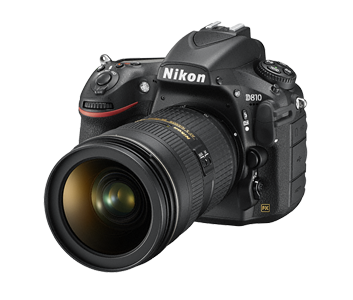
Nikon D810/D810a
2014 |
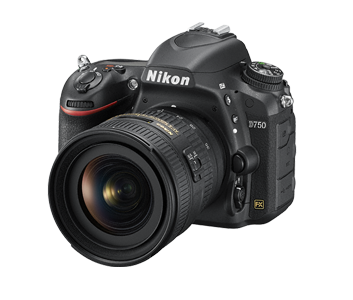
Nikon D750
2014 |
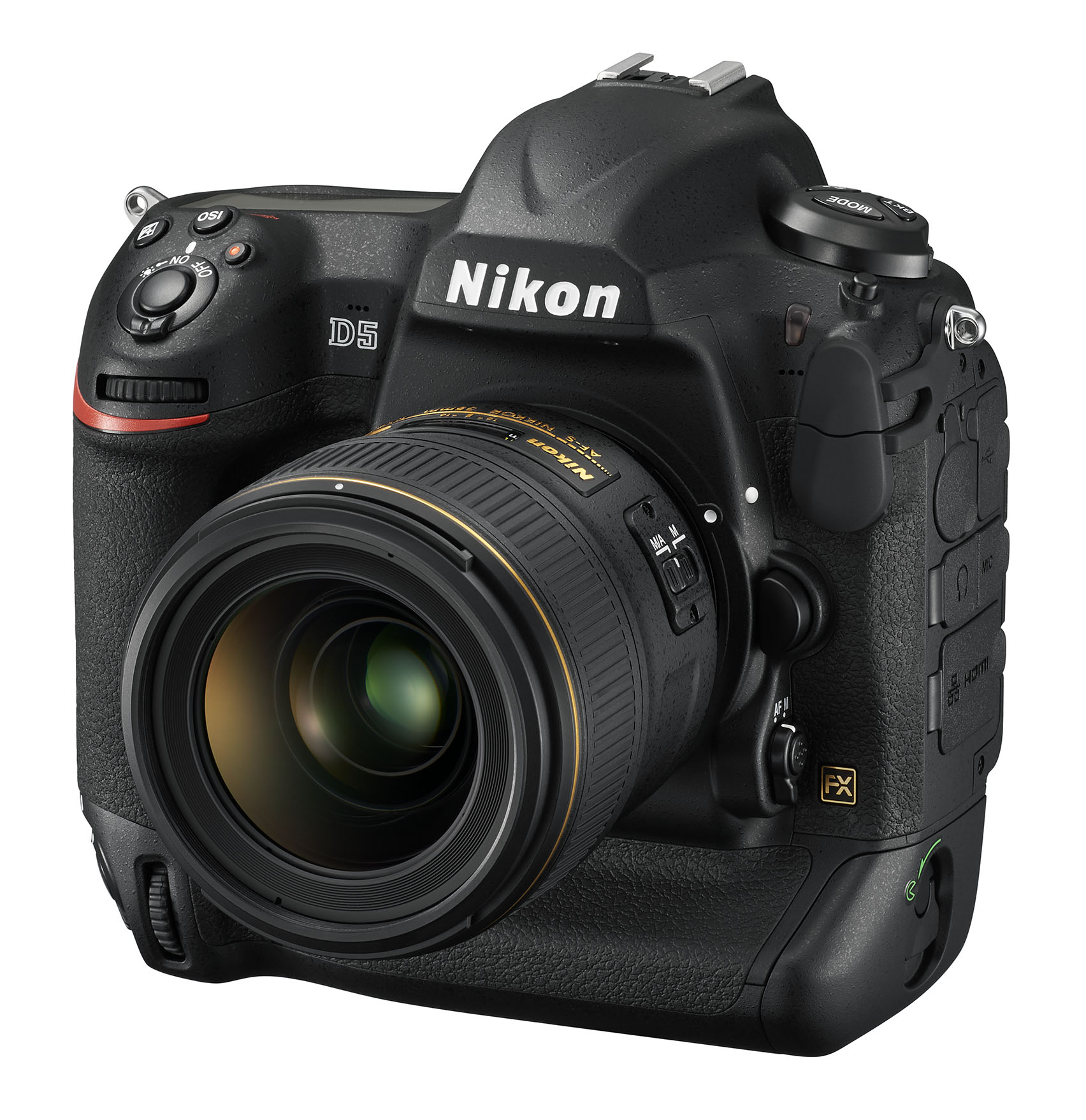
Nikon D5
2016 |
The twelfth camera, the Nikon D810, announced in June 2014, is an evolution of the D800 and D800E with a new Full Frame FX CMOS sensor of 36.3 Megapixel without optical low-pass filter and with a rate of 5 frames per second with AF, a sensitivity range of ISO 64-12,800 (expandable from 32 to 51,200 ISO), an image processor EXPEED 4a, an enhanced Full HD video mode 24p, 25p, 30p and 60p with built-in stereo microphone, a quieter mechanical shutter, a "Quiet" mode and a new electronic shutter 100% silent. The D810 inherits the D4S of 51 AF points with the new area AF group, EXPEED image processor 4a and RAW S size option mode.
In February 2015, Nikon presents a special release of D810. The Nikon D810a is a FX-format digital SLR camera designed exclusively for full-scale astrophotography. It has the same 36.3-million pixels sensor and characteristics than Nikon D810 but the optical filter on the front surface of the image sensor is capable of four times greater transmission of H-alpha light than is that used with the D810.
The D810a includes the addition of a long-exposure manual (M*) mode that supports exposure times up to 900 s, and a live view preview function that makes focusing and composing images easier with display of a preview at a shutter speed of 30 s when an exposure time longer than 30s is specified.
The Nikon D750, announced in September 2014 for the Fotokina, is the true heir to the D700 with a new Full Frame FX CMOS sensor of 24.3 Megapixel (6016 x 4016 pixels) a Multi-CAM 3500 AF II updated from the D810 module.
The front plate of D750 is made of carbon fiber on a magnesium chassis. This is the first full-format Nikon DSLR to have an 3.2 inch rear swivel screen , but not a touch , with 1,229,000 points that opens and rotates up to 90 ° up and 75 ° to the below, a Wi-Fi built-in module integrated in the flash bump but no built-in GPS.
It has a rate of 6.5 frames per second, a full HD video mode in 60p, an sensitivity range of 100-12,800 ISO (expandable from 64 to 51,200 ISO).
The Nikon D5, announced in January 2016 replaces the D4s. It has a new 20.8 megapixel full-size Nikon CMOS sensor (5 568 x 3 712 pixels), a 4K (3840 x 2160 px) 30p / 25p / 24p video mode with a maximum of 6 minutes, a new AF Nikon MultiCam 20k module with 153 AF points including 55 cross points and a sensibility until -4 IL, an RGB light sensor of 180,000 pixels.The Nikon D5 provides a sensitivity range from 100 to 102,400 ISO expandable to 3 280 000 ISO (Hi5). It has a built-in Nikon "Snapbridge" software able to share images with smartphones and other devices, and with the cloud.
The version Nikon D5-a has two XQD cards slots able to store 200 RAW images in 14-bit and the second version, Nikon D5-b, replaces XQD cards by two CF cards limited to 82 RAW burst.
|

Nikon D850
2017 |
The Nikon D850, presented in August 2017, replaces the D810.
This new camera is a mini-D5 and has a new 45.75 megapixel full-size Nikon BSI CMOS sensor with no low-pass filter.
It inherits of D5 a 180,000 RGB sensor with better face detection and enhanced scene recognition, an 153-point AF system.
It has a native ISO range of 64-25600 (expandable to 32-108400), video modes : 8K timelapse shooting, 4K UDH video with electronic vibration reduction recording in FX with no crop 51-photo buffer when shooting in 14-bit RAW, a "slow-motion" video mode and a new built-in negative digitizing feature.
It has a an 3.2’, 2.36-million-dot tilting LCD touchscreen with improved gesture control, a 7fps continuous shooting standard, 6fps with autofocus, 9fps when using a battery grip, 30ps at 8MP using the electronic shutter.
It has also an 0.75x magnification viewfinder, back illuminated buttons and a dual memory card slots: one SD UHS-II and one XQD but it has no built-in flash. |
|
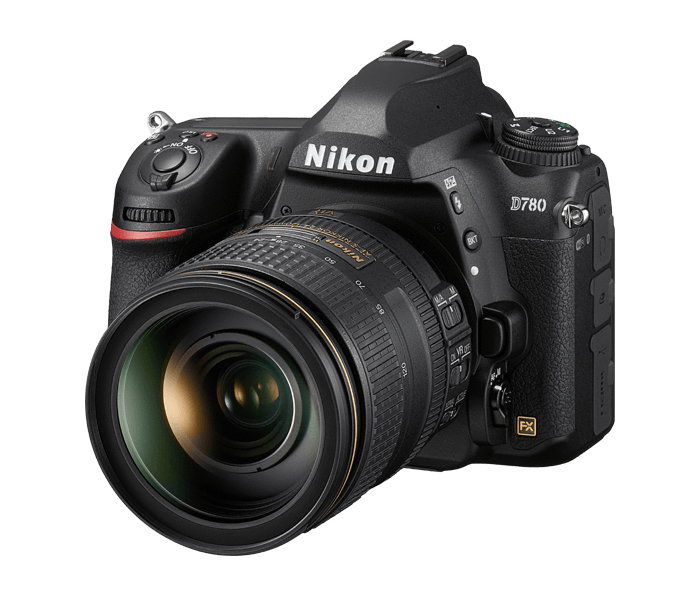
Nikon D780
2020 |
The Nikon D780, presented in January 2020, replaces the D750 and becomes Nikon's entry point into full-frame DSLR. It has a back-illuminated full-format (FX) sensor of 24.50 Megapixels (35.9mm x 23.9mm) with low-pass filter from the Nikon Z6, a hybrid autofocus: In reflex aiming, the associated AF module is that of the D750 Multi -CAM 3500 II, sensitive up to -3 EV, with 51 collimators including 15 cross and 11 f/8 compatible and a 91,000 pixel RGBB sensor, it is associated with the D5 algorithm, an Expeed 6 processor. no longer has a built-in flash or additional grip. |
|
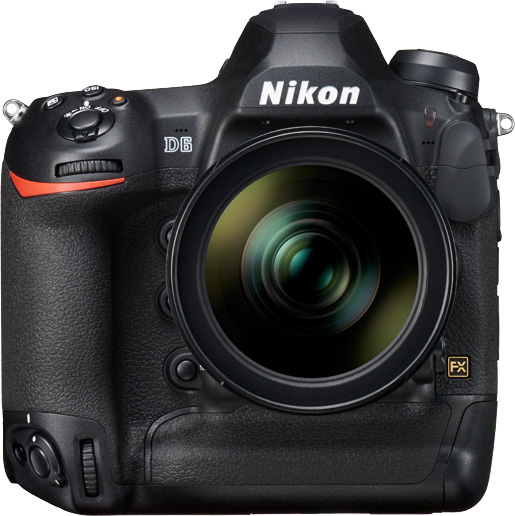
Nikon D6
2020 |
The Nikon D6, presented in February 2020, replaces the Nikon D5 and is the last professional Nikon F digital camera, as F6 was the last professional Nikon F film camera.
It has a 20.8 million pixel Nikon FX full-frame sensor, an improved AF system with 105 selectable cross sensors, a 4K 30p video recording mode but with focus peaking and the ability to record in MP4, a burst mode at 14 fps with type E lenses (those whose diaphragm is electronically controlled). It has two CFexpress or XQD card slots, an Expeed 6 image processor, integrated GPS, Bluetooth and Wi-Fi (11a/b/g/n/ac) modules and support for 1000BASE-T for the cable network. |
|

Sony A7r |
Epilogue: The end of the F mount
In 2013, Sony introduced the Sony A7R , this full-size 36-megapixel camera is a milestone in the reflex Full Format.
Since the acquisition of Minolta camera pictures division, Sony had produced the classic full size APS-C DSLR with mirror room and optical viewfinder, digital hybrid NEX interchangeable with lens APS-C and finally electronic viewfinder transparent mirror APS-C or full-frame (Sony Alpha 99). This latest range of SLT cameras combined the disadvantages : lack of mirror and electronic viewfinder but they keep the bulk of reflex and classic lenses
.
With A7R , Sony clearly indicates the future direction : opportunities related to the full-frame sensor in a similar body than hybrid cameras. The advances in electronic viewfinders now make this solution credible and corresponds to core businesses of Sony : electronics. The Sony A7 becomes a family of cameras, some oriented video other photos. The Sony A7rII has a 42 million pixels sensor.
The Sony A9, released in 2017, is for the pro market with a backlit, stabilized 5-axis CMOS sensor of 24.2 million pixels, an electronic shutter that rises to 1/32000 s allowing bursts at 20 frames per second with AF tracking on 300 images jpg or 110 RAW views, 4K video mode.
.
|

Nikon Z6 |
At the end of 2018, Nikon presented its first hybrid cameras with interchangeable lenses : the Z6 and Z7 with full format sensors and a new Z mount.
In 2024, Nikon abandoned, like other brands, except Pentax, its mirror chamber SLRs to devote itself to new mirrorless cameras and Z mount. |


















